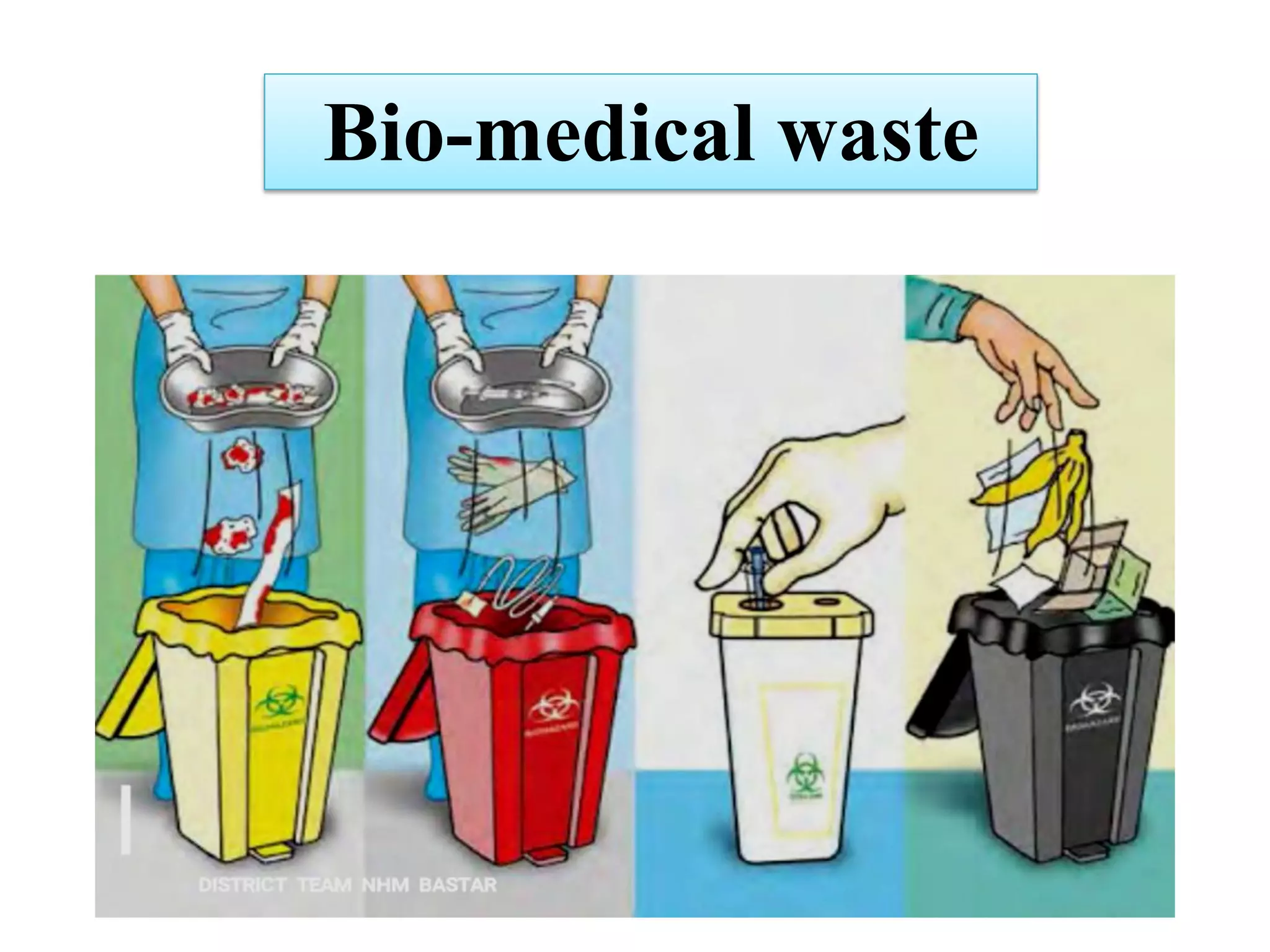I. Introduction to Biomedical Waste
A. Definition of Biomedical Waste:
Biomedical waste refers to any waste generated during healthcare activities that may contain infectious materials, such as blood, bodily fluids, tissues, pharmaceuticals, and medical devices. It poses potential health and environmental risks due to its hazardous nature.
B. Sources and Types of Biomedical Waste:
Biomedical waste originates from various healthcare settings, including hospitals, clinics, laboratories, and research facilities. The types of biomedical waste can be categorized as infectious, non-infectious, sharps (needles and syringes), pathological, pharmaceutical, chemical, and radioactive waste.
II. Risks and Hazards Associated with Biomedical Waste
A. Health Risks to Humans and the Environment:
Improper handling and disposal of biomedical waste can lead to the spread of infectious diseases among healthcare workers, waste handlers, and the public. It can also contaminate soil and water, posing severe environmental hazards.
B. Impact on Public Health and Safety:
Inadequate biomedical waste management can lead to outbreaks of diseases, environmental pollution, and public health emergencies. Proper waste management is crucial to prevent such risks.
III. Biomedical Waste Management and Regulations
A. Importance of Proper Biomedical Waste Management:
Effective biomedical waste management is essential to protect human health, prevent the spread of infections, and safeguard the environment. Proper disposal practices minimize risks and ensure compliance with regulations.
B. Overview of Regulatory Guidelines and Compliance:
Governments and health authorities establish strict regulations and guidelines for biomedical waste management. Compliance with these rules ensures safe handling, transportation, treatment, and disposal of biomedical waste.
IV. Biomedical Waste Handling and Segregation
A. Safe Practices for Collection and Segregation:
Healthcare facilities must implement safe and standardized procedures for the collection and segregation of biomedical waste at the point of generation. Proper containers and labeling are vital for easy identification and safe handling.
B. Importance of Containment and Packaging:
Biomedical waste should be securely contained and packaged to prevent leaks, spills, and potential exposure. Different waste types require specific packaging and color-coding for easy differentiation.
V. Biomedical Waste Treatment and Disposal
A. Methods of Treatment:
Various methods are employed to treat biomedical waste, such as autoclaving (steam sterilization), incineration, chemical disinfection, and microwave treatment. Each method serves to neutralize the infectious components and reduce the volume of waste.
B. Environmentally Responsible Disposal Options:
Environmentally friendly disposal methods, such as waste-to-energy processes and landfill alternatives, are gaining popularity to reduce the environmental impact of biomedical waste.
VI. Roles and Responsibilities in Biomedical Waste Management
A. Responsibilities of Healthcare Facilities and Providers:
Healthcare facilities have a responsibility to segregate, store, and handle biomedical waste appropriately. They must ensure that waste management protocols are followed to protect staff, patients, and the community.
B. Involvement of Waste Management Companies:
Professional waste management companies play a crucial role in collecting, transporting, and treating biomedical waste. Their expertise ensures compliance with regulations and safe waste disposal.
VII. Biomedical Waste Management in Different Healthcare Settings
A. Hospitals and Medical Centers:
Hospitals produce significant quantities of biomedical waste and must have robust waste management systems in place to handle diverse waste streams.
B. Laboratories and Research Facilities:
Laboratories and research centers generate various hazardous wastes, including chemical and pathological waste, necessitating specialized handling and disposal protocols.
C. Clinics and Dental Offices:
Smaller healthcare settings like clinics and dental offices also produce biomedical waste and should adhere to proper disposal guidelines.
VIII. Training and Education for Biomedical Waste Management
A. Staff Training and Safety Measures:
Healthcare personnel involved in waste management should receive proper training on waste handling, safety precautions, and regulatory compliance.
B. Awareness Campaigns and Public Education:
Public awareness campaigns help educate the community about proper waste disposal, fostering responsible waste management habits.
IX. Future Trends in Biomedical Waste Management
A. Advancements in Waste Treatment Technologies:
Ongoing research and advancements in waste treatment technologies aim to improve efficiency and environmental sustainability.
B. Sustainable and Green Initiatives:
Emphasis on sustainable practices, recycling, and waste reduction is becoming integral to biomedical waste management strategies.
X. Conclusion
A. Importance of Proper Biomedical Waste Management:
Proper biomedical waste management is critical for public health, environmental protection, and regulatory compliance.
B. Call to Action for Responsible Waste Practices:
Encouraging responsible waste practices and adherence to regulations ensures a safer and healthier environment for all.

